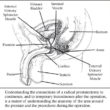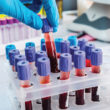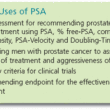Dr. Catalona’s opinion on the debate about renaming Gleason grade group 1 prostate cancer “not cancer”

The International Society of Urologic Pathology (ISUP) 2019 modification of the prostate cancer grading system is now well-established for diagnosing and managing prostate cancer patients. Recently, some authors have called for removing the cancer label from Gleason grade group 1 (GG1). The goal of such declassification is to avoid the cancer label and solve the “overtreatment crisis” that is currently diminishing with more widespread appropriate adoption of active surveillance of prostate cancer with a low risk of disease progression.
The central issue under consideration is whether it is appropriate for urologists to direct pathologists who review prostate cancer specimens to change their well-established label of GG1 cancer regardless of other risk- assessment parameters. This would be a major step, as it would affect all men who would currently be offered active surveillance (AS) by telling them they do not have cancer to surveil and those who, under today’s guidelines, fall under the higher-risk GG2 category.
A so-called discrete choice experiment (DCEs) has been published to support the notion that patients, their partners, and healthy individuals all would prefer to have a “non-cancer” label applied GG1 prostate cancer, and it increased their choice of active surveillance. However, DCEs have numerous limitations and weaknesses. The participants are presented with oversimplified, non-real-life decisions; may not be completely aware of their true preferences and may be overwhelmed by the number of possible scenarios presented. The results may not apply well to real- world situations or across different populations. Most importantly, they may be unduly influenced by how the options are presented to them.
Prostate cancer is a multifocal, heterogeneous disease; not all regions of cancer in the prostate exhibit the same risk profile; some progress at different rates. There are serious worries because we lack true knowledge. A small number of biopsy cores containing GG1 cancer may harbor genetic features associated with a high risk of progressing to a higher tumor grade having aggressive behavior, or the biopsy procedure may have failed to sample more aggressive disease elsewhere in the prostate.
Long-term follow-up is needed to assess the clinical significance of low-grade prostate cancers. To accurately assess the biology of GG1 disease, outcomes with more than 20-year follow-up of patients who were never treated, even after tumor reclassification, would be required. This would be an impracticable study that never could be undertaken.
If a person’s certain genetic functioning remains stable (well organized), then they remain healthy. If one’s genetic functioning becomes unstable, it can lead to the development of prostate cancer, activating oncogenes and inactivating tumor suppressor genes. Many GG1 cancers contain high genomic risk variants not found in normal prostate tissues. These high-risk genomic variants are identical to those seen with higher-grade tumors, sometimes with the same frequency, and suggest that GG2 tumors may arise from clones of GG1 tumors. The cancers containing such high-risk variants have worse pathology and more frequent recurrences after treatment. The greater the amount of GG1 cancer found in the diagnostic biopsy specimens, the more likely the tumor will express adverse genomic markers and behave aggressively.
Numerous unintended consequences would follow renaming GG1 cancer as “not cancer.” The incorrect grading of GG1 and GG2 tumors by some pathologists would result in some patients not receiving proper counseling for AS and others receiving unnecessary treatment. Thus, pathology review of biopsy slides can be crucial.
Additional prediction tools are now available to help overcome biopsy under-sampling and genetic risk issues. PSA isoform measurements, such as the Prostate Health Index and the Percent Free PSA, can be used to assess the clinical significance of prostate cancer as well as the risk of dying from prostate cancer. Testing germline blood or saliva DNA samples for monogenic and polygenic variants that are associated with disease aggressiveness is now available, and somatic genomic testing of biopsy specimens is gaining increased use. New pathology and imaging methods enhanced by artificial intelligence promise to reduce inter-reader variability and provide more accurate risk assessments.
The practical way forward is to continue to acknowledge the potential over-treatment issue and deal with it through developing evidence-based guidelines to increase the appropriate adoption and quality of active surveillance and integrate the new risk parameters with the traditional ones.
The medical community should insist upon basing proposed changes in GG classification on firm scientific evidence. The slow initial uptake of AS in the U.S. is not sufficient reason to change the biological definition of cancer. With the new 2019 USIP grading system classifying GG1 tumors as “1 on a scale of 1-5” rather than “6 on a scale of 2-10,” patients now feel more comfortable choosing AS for the lowest GG1 group.

The responsibility for proposed changes in the designation GG1 as cancer relies on urologists, radiation oncologists, medical oncologists, and pathologists; the ultimate authority to decide should remain in the purview of pathologists. Only 15% of pathologists support declassification. The arguments for renaming GG1 cancer are weakening, and there is strong support for retaining the cancer designation.




















